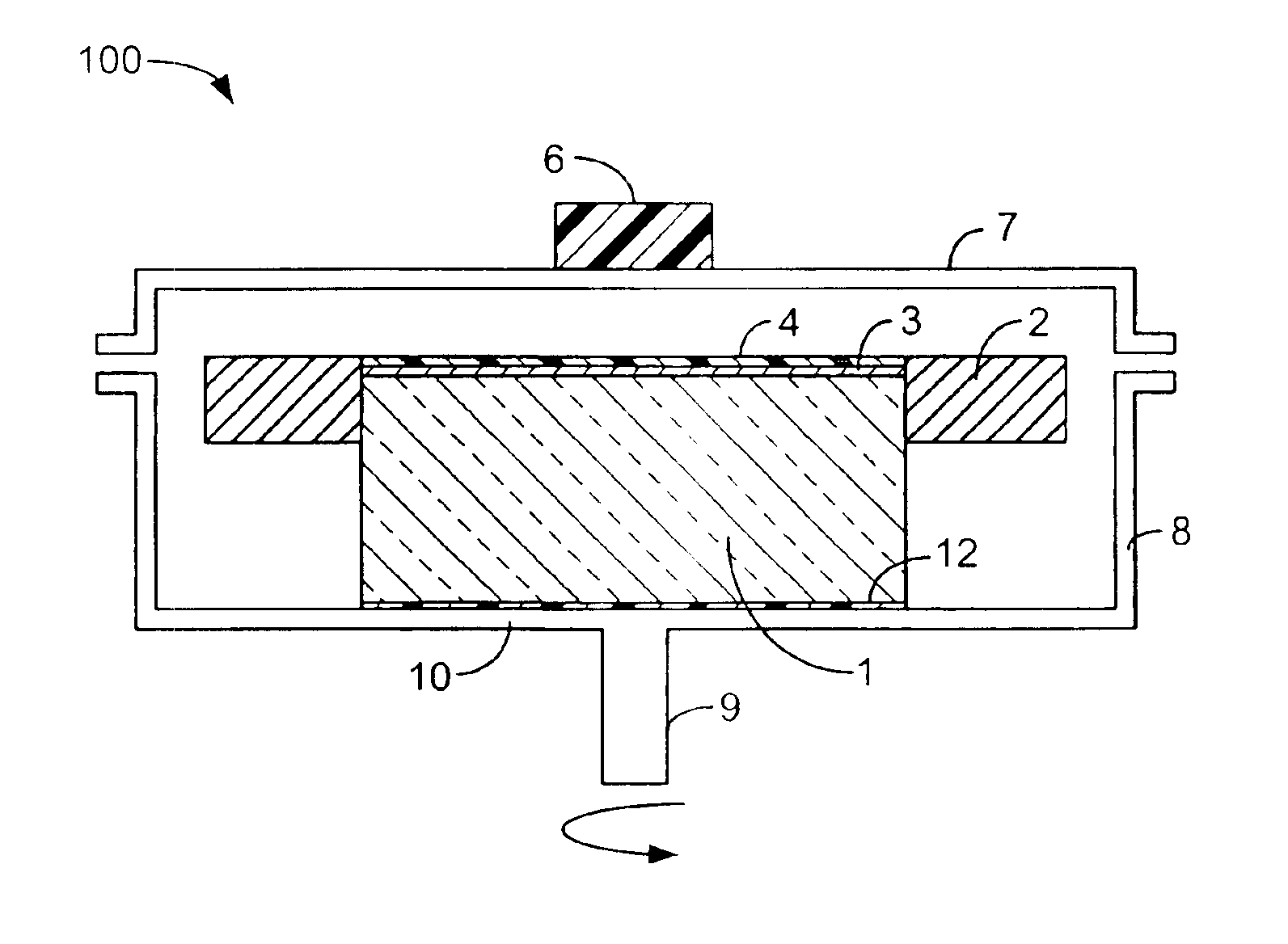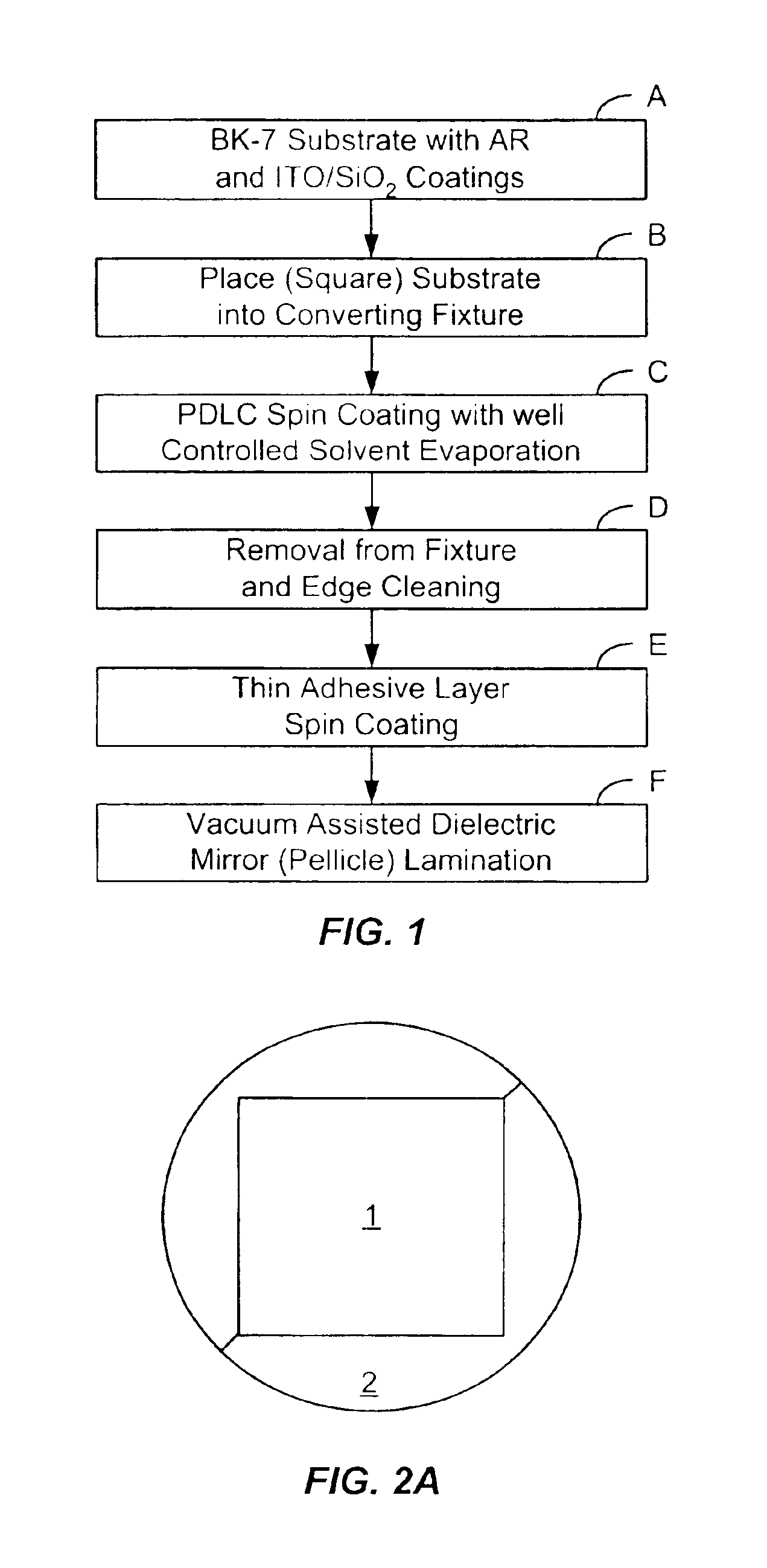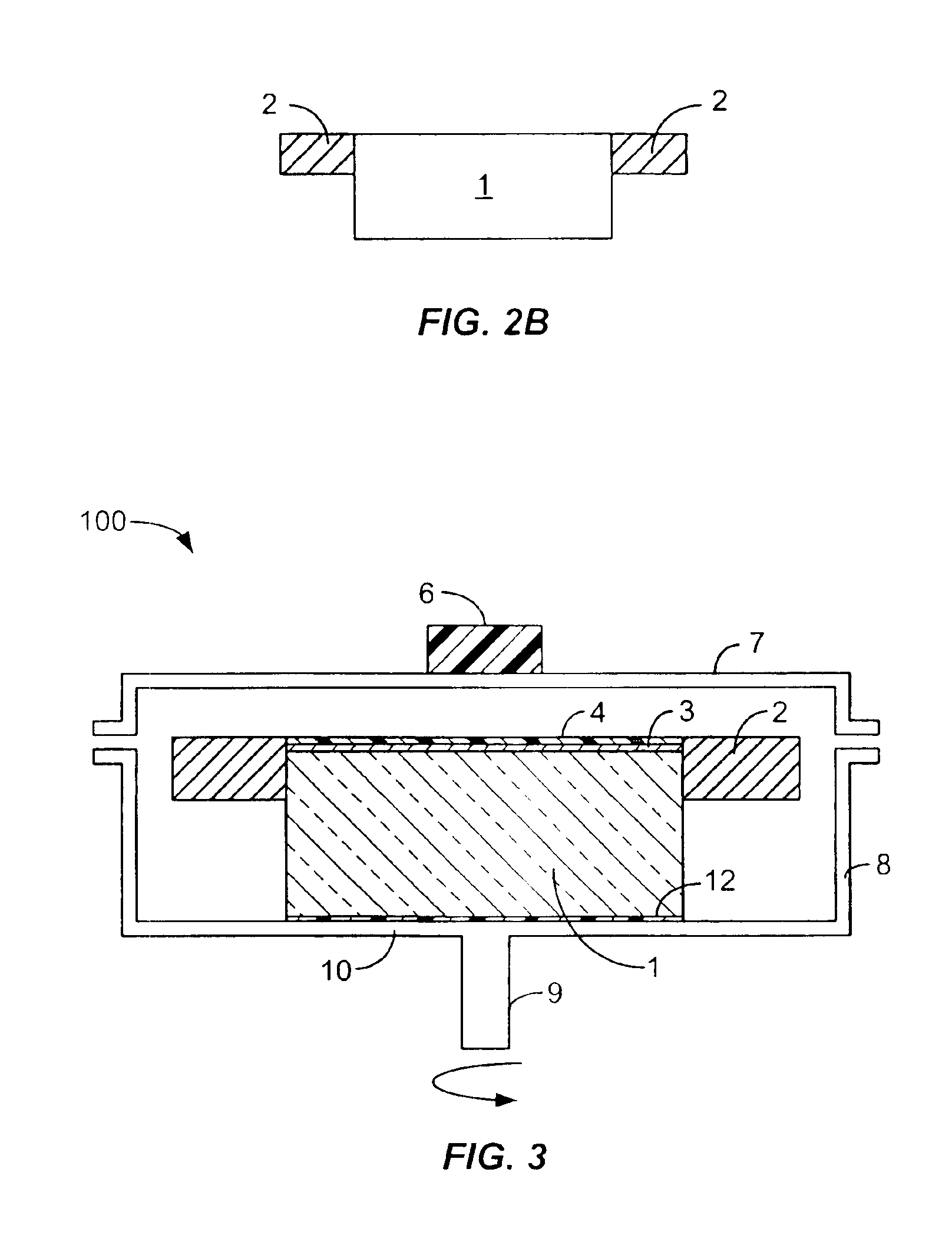Method for manufacturing PDLC-based electro-optic modulator using spin coating
a technology of electro-optic modulators and spin coatings, which is applied in the direction of coatings, instruments, pre-treated surfaces, etc., can solve the problems of low yield of final modulators, lack of surface flatness and smoothness, and edge/corner defects
- Summary
- Abstract
- Description
- Claims
- Application Information
AI Technical Summary
Benefits of technology
Problems solved by technology
Method used
Image
Examples
Embodiment Construction
Referring to FIG. 1, the process according to the invention is illustrated. A glass substrate, such as a square block of BK-7 glass, is provided which has been provisioned with an anti-reflective (AR) coating on the uncoated bottom side, with gold coatings on its four lateral sides, and indium tin oxide (ITO) / SiO2 coatings on the topside (Step A). The ITO coating thoroughly covers between opposite sidewalls.
Referring to FIGS. 2A and 2B with 1, the substrate, which is typically a square glass block is placed into a converting fixture or collar 2 in order to convert the square surface into the equivalent of a round or enclosure-conforming substrate to accommodate the spin coating process (Step B). As shown in FIGS. 2A and 2B, a two-piece semi circular collar fixture 2 made of aluminum or other material is placed around the square BK-7 substrate 1. The fixture 2 is set so that its surface is at the same level as the top of the BK-7 substrate 1. The primary purpose of circularizing the ...
PUM
| Property | Measurement | Unit |
|---|---|---|
| thickness | aaaaa | aaaaa |
| distance | aaaaa | aaaaa |
| pressure | aaaaa | aaaaa |
Abstract
Description
Claims
Application Information
 Login to View More
Login to View More - R&D
- Intellectual Property
- Life Sciences
- Materials
- Tech Scout
- Unparalleled Data Quality
- Higher Quality Content
- 60% Fewer Hallucinations
Browse by: Latest US Patents, China's latest patents, Technical Efficacy Thesaurus, Application Domain, Technology Topic, Popular Technical Reports.
© 2025 PatSnap. All rights reserved.Legal|Privacy policy|Modern Slavery Act Transparency Statement|Sitemap|About US| Contact US: help@patsnap.com



